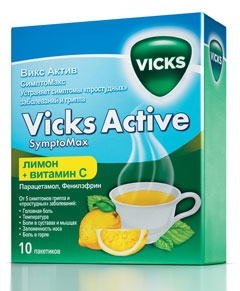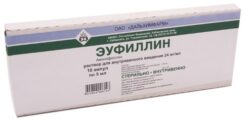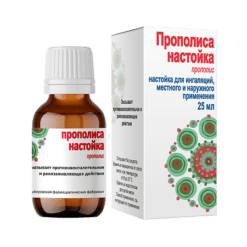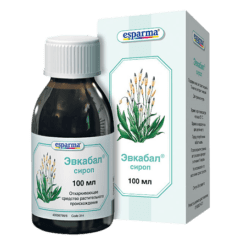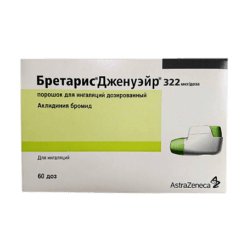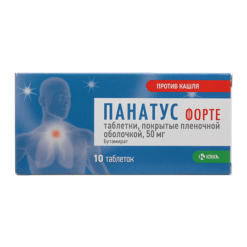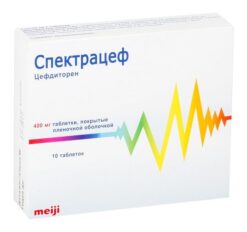No products in the cart.
Vix Aktiv SymptoMax powder for oral solution lemon sachets, 10 pcs.
€1.00
Out of stock
(E-mail when Stock is available)
Description
A combination drug, the effect of which is due to the composition of its components.
Paracetamol has analgesic and antipyretic effects, these effects are due to inhibition of prostaglandin synthesis in the CNS.
Phenylephrine is a postsynaptic agonist of α-adrenoreceptors with low cardioselective affinity for β-adrenoreceptors. Antiinflammatory drug, it narrows blood vessels, eliminates swelling and hyperemia of the nasal mucosa.
Pharmacokinetics
Absorption and distribution
Paracetamol is quickly and completely absorbed from the small intestine. Cmax in blood is observed 15-20 min after oral administration. Systemic bioavailability is determined by presystemic metabolism and, depending on the dose, ranges from 70% to 90%. Paracetamol is rapidly distributed throughout all tissues of the body and has
Phenylephrine is rapidly absorbed from the gastrointestinal tract. Cmax is reached after 1-2 h.
Metabolism and excretion
The T1/2 of paracetamol is approximately 2 h. Paracetamol is metabolized in the liver and excreted in the urine as glucuronides and sulfate compounds (>80%).
The level of metabolism of phenylephrine on “first passage” through the liver is quite high (about 60%), so oral use of phenylephrine reduces its bioavailability (about 40%). T1/2 varies from 2 to 3 h. It is excreted with the urine as sulfate compounds.
Indications
Indications
Vix Aktiv SymptoMax is recommended for relieving symptoms of colds and flu: headache, sore throat, other types of pain, stuffy nose, high body temperature.
Active ingredient
Active ingredient
Composition
Composition
Excipients:
ascorbic acid – 100 mg,
sucrose – 1936 mg,
citric acid – 812 mg,
sodium citrate – 501 mg,
aspartame – 25 mg,
acesulfame potassium – 65 mg,
quinoline yellow dye – 1 mg,
lemon flavoring F/29088 – 30 mg,
lemon flavoring F/29089 – 240 mg,
Lemon flavoring F/28151 – 240 mg,
Lemon flavoring F/501.476/AP0504 – 40 mg.
How to take, the dosage
How to take, the dosage
Adults and children over 18 years: 1 sachet. If necessary, repeat every 4-6 hours, but no more than 4 doses (sachets) per day.
The drug is not recommended for more than 5 days as a pain reliever and 3 days as an antipyretic without consulting a doctor. If symptoms persist, you should see your doctor.
Interaction
Interaction
Paracetamol
Stimulants of microsomal oxidation in the liver (phenytoin, ethanol, barbiturates, flumecinol, rifampicin, phenylbutazone, tricyclic antidepressants) increase the production of hydroxylated active metabolites, which causes the possibility of severe intoxication.
Paracetamol increases the effect of indirect anticoagulants and reduces the effectiveness of uricosuric drugs.
The rate of absorption of paracetamol is increased by metoclopramide or domperidone and decreased by colestyramine.
The anticoagulant effect of warfarin and other coumarin derivatives is increased with long-term use of paracetamol.
The drug increases the effects of MAO inhibitors, sedatives and ethanol.
Phenylephrine
Phenylephrine concomitantly used with antidepressants, antiparkinsonics, antipsychotics, phenothiazine derivatives may cause urinary retention, dry mouth, constipation.
The risk of glaucoma increases when used with GCS.
Tricyclic antidepressants increase the adrenomimetic effects of phenylephrine; concomitant administration of halothane increases the risk of ventricular arrhythmias.
Special Instructions
Special Instructions
During treatment it is necessary to refrain from taking sleeping pills, anxiolytic drugs and other drugs containing paracetamol.
Phenylephrine may be taken orally at intervals of 4-6 hours as a means to reduce nasal mucosal edema.
The drug distorts the results of laboratory tests assessing plasma concentrations of glucose and uric acid.
The drug contains sucrose and therefore is contraindicated in patients with rare congenital fructose intolerance, with impaired glucose-galactose absorption or with sucrose-isomaltase deficiency.
The drug contains aspartame (E951), a source of phenylalanine, so it may be toxic to patients with phenylketonuria.
The use of the drug should not be combined with alcohol consumption.
Impact on driving and operating machinery
When driving motor vehicles and engaging in other potentially dangerous activities, you should be aware that the drug may cause side effects such as dizziness and confusion.
Contraindications
Contraindications
Side effects
Side effects
Paracetamol
Allergic reactions: rare – skin rash, urticaria, anaphylaxis, bronchospasm, angioedema.
CNS disorders: rarely – dizziness.
Hematopoietic system disorders: rare – aplastic anemia, methemoglobinemia, increased BP; very rare – abnormal blood changes such as thrombocytopenia, agranulocytosis, hemolytic anemia, neutropenia, leukopenia, pancytopenia.
Digestive system disorders: rarely – nausea, vomiting, dry mouth, hepatotoxic effect.
The urinary system: rarely – urinary retention, nephrotoxicity (papillary necrosis).
Others: rare – paresis of accommodation, increased intraocular pressure, mydriasis.
Phenylephrine
Cardiovascular system: rare – tachycardia, increased BP.
Nervous system disorders: rarely – insomnia, nervousness, tremor, anxiety, increased excitability, confusion, irritability and headache.
In the digestive system: often – anorexia, nausea and vomiting.
Allergic reactions: rare – allergic reactions, including skin rash, urticaria, anaphylaxis and bronchospasm.
Overdose
Overdose
Symptoms: liver damage is possible in adults who have taken 10 g or more of paracetamol. Taking paracetamol in an amount of 5 g or more may cause liver damage if there are risk factors: long-term treatment with carbamazepine, phenobarbital, phenytoin, primidone, rifampicin or other drugs that induce liver enzymes, alcohol abuse, glutathione deficiency (eg, poor diet), cystic fibrosis, HIV infection, starvation, cachexia.
Pale skin, nausea, vomiting, anorexia, and abdominal pain. Liver damage may occur within 12 to 48 hours after administration of the drug. Symptoms may appear only partially in the form of nausea or vomiting, and may not reflect the actual degree of overdose or risk of organ damage. In severe overdose – hepatic failure with progressive encephalopathy, coma, death; acute renal failure with tubular necrosis (including in the absence of severe liver damage); arrhythmia, pancreatitis.
The symptoms of phenylephrine overdose include irritability, headache, and increased BP (if these symptoms occur, seek medical attention).
Treatment: although there are no initial symptoms of overdose, it is necessary to seek qualified medical attention. In order to prevent severe consequences of overdose necessary measures should be taken in a timely manner. Administration of SH-group donators and precursors of glutathione synthesis – methionine within 8-9 hours after overdose and acetylcysteine – within 8 hours. The need for additional therapeutic measures (further administration of methionine, intravenous injection of acetylcysteine) is determined depending on the concentration of paracetamol in the blood, as well as the time elapsed after its administration.
Pregnancy use
Pregnancy use
Vix Aktiv SymptoMax is not recommended for children under 18 years of age, pregnant and lactating women.
Additional information
| Shelf life | 3 years |
|---|---|
| Conditions of storage | At a temperature not exceeding 25 °C |
| Manufacturer | Rafton Laboratories Limited, United Kingdom |
| Medication form | oral solution |
| Brand | Rafton Laboratories Limited |
Related products
Buy Vix Aktiv SymptoMax powder for oral solution lemon sachets, 10 pcs. with delivery to USA, UK, Europe and over 120 other countries.

